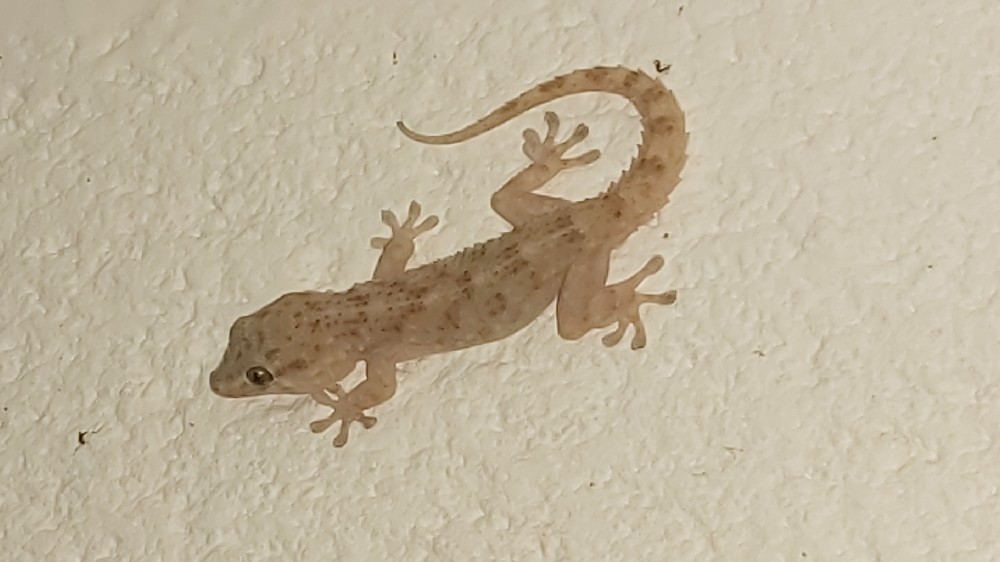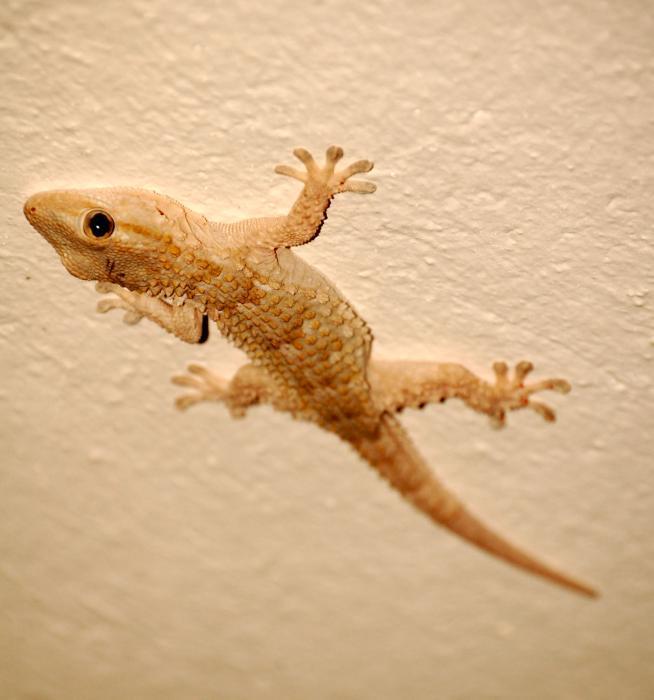The Fascinating Life of the African House Wall Gecko
If you’ve ever spotted a small, gray-brown lizard darting across your wall or ceiling at night, you’ve likely met one of Africa’s most adaptable little creatures — the African House Gecko (Hemidactylus mabouia). Though small in size, this unassuming reptile is a master of stealth, speed, and survival. Beyond being a household visitor, it’s also an unsung hero that helps control insects, including mosquitoes.
Physical Features – Built for the Night
The African house gecko is a miniature reptile, measuring about 10 to 13 centimeters from head to tail. Its mottled gray-brown skin, often striped or spotted, allows it to blend into walls and rocks with ease. Even more impressively, its color can subtly lighten or darken depending on temperature and surroundings, acting as natural camouflage.
Its large, lidless eyes with vertical pupils give it extraordinary night vision, perfect for spotting small insects in dim light. Since they lack eyelids, geckos use their tongues to clean their eyes, keeping their vision sharp and clear.
One of the most fascinating features of the African house gecko lies in its feet. Each toe is lined with microscopic scales known as lamellae, which act like suction cups. These tiny structures allow the gecko to cling to smooth surfaces like glass, tiles, and even ceilings — effortlessly defying gravity.
And when danger strikes? The gecko performs a classic survival trick: it drops its tail. The detached tail continues to wiggle on the ground, distracting predators long enough for the gecko to escape. Although it eventually regrows the tail, the new one is usually shorter and duller in color.
Habitat and Nocturnal Lifestyle
Native to sub-Saharan Africa from Kenya and Zimbabwe to Madagascar, the African house gecko thrives in warm, humid environments. Over time, it has adapted so well to human settlements that it’s now found in homes, offices, and urban neighborhoods across Africa and beyond.
During the day, these geckos hide in cracks, behind picture frames, under rocks, or inside rafters, staying out of sight and away from the heat. But when night falls, they come alive.

Wall gecko
Their favorite hunting ground? Walls and window sills near lights. The reason is simple — light attracts insects, turning bright walls into a nighttime buffet. Here, geckos can feast effortlessly on swarming bugs without having to move far.
Diet and Hunting Behavior
African house geckos are voracious insectivores. Their diet includes mosquitoes, moths, beetles, cockroaches, spiders, centipedes, and even small scorpions. In urban areas, studies show that cockroaches are a favorite meal, but they’ll eat almost any insect they can overpower.
Their hunting technique is simple but effective. They are ambush predators, waiting patiently on walls or ceilings near light sources. When an insect wanders close, they strike quickly, grabbing it with their jaws or flicking out their sticky tongues.
In African homes, these geckos do more than just provide entertainment, they serve as natural pest control, especially helpful in reducing malaria-carrying mosquitoes.
Sound and Communication
Despite their small size, African house geckos are surprisingly noisy creatures. Their distinct chirps and clicks often echo through quiet homes at night. The call typically sounds like a “tik-tik-tik” or “gecko, gecko”, which is actually how the species got its common name.

Wall Gecko
Males use these calls to mark their territory, warn rivals, or attract females during mating seasons. The chirping, though unexpected from such a small reptile, is a key part of their communication system.
Defense Mechanisms
Timid and non-aggressive, the African house gecko’s main defense is speed and distraction. If grabbed by the tail, it immediately detaches it — a process known as tail autotomy. The wriggling tail distracts predators while the gecko scampers away to safety.
Camouflage also plays an important role in its defense, helping it blend seamlessly with walls, stones, and bark. Importantly, these geckos are harmless to humans — they are non-venomous and their bite, if it ever happens, is too weak to even break skin.
Reproduction and Lifespan
African house geckos reproduce rapidly. Females lay two small, white eggs at a time, often in hidden corners, under ledges, or within roof rafters. The eggs are sticky and adhere firmly to the surface.
They can lay multiple clutches per year, as many as seven, depending on environmental conditions. After six to eight weeks, tiny hatchlings emerge, fully independent from birth. These juveniles grow quickly, reaching adult size within six to twelve months.
In the wild, geckos live for about three to five years, though some in safe, captive environments can live up to seven or eight years.
Humans and Ecology
The African house gecko plays an important ecological and domestic role. In homes, it serves as a natural pest controller, eating mosquitoes, flies, and other insects that spread diseases. Farmers also appreciate geckos for their pest-reducing presence in crops and plantations.
Many people, especially in Africa, Asia, and the Caribbean, consider the house gecko a symbol of good luck. Seeing one in your home often means protection, prosperity, and fewer insects around.
However, they do leave tiny droppings in corners, which can be cleaned easily, a small inconvenience for their pest control benefits.
So, the next time you notice one clinging to your ceiling, remember it’s not an intruder. It’s a tiny nighttime guardian, working hard to keep your home insect-free.